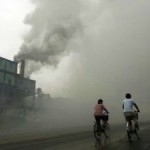Thus, even modest changes should not be dismissed. “Simply put, a cool roof will save money for home-owners and businesses through reduced air-conditioning costs. The real question is not whether we should move toward cool roof technology: it’s why we haven’t done it sooner,” says Rosenfeld.
Other Studies Reach Similar Conclusions
Another recent study on cool roofs, led by Keith Oleson at the National Center for Atmospheric Research (NCAR) and published in ‘Geophysical Research Letters’, found that if every roof were painted entirely white, the CO2 emission offsets would be approximately 32 Gt for summer and about 30 Gt annually. While the NCAR study used a different model, the calculated CO2 emission offsets are similar to the results from the Berkeley Lab study and provide a useful and independent verification of the expected CO2 emission offsets from increasing the reflectivity of roofs. (Read more about the NCAR-led research: Computer Model demonstrates that White Roofs may successfully Cool Cities)
Some observers have pointed out that cool roofs do not make sense in cooler climates because of “winter penalties,” since cooler buildings require more energy to heat. However, the energy savings from cooler buildings usually outweighs any increase in heating costs. Furthermore, in winter, there tends to be more cloud cover; also, the sun is lower and the days are shorter, so a flat roof’s exposure to the sun is significantly reduced.
“Cool roofs have worked for thousands of years in the Mediterranean and Middle Eastern cities, where demand for air-conditioning is low,” says Akbari. “If you have a cool roof on your house, it will reduce your energy use from air-conditioning and it’s a gift that keeps on giving for many, many years, for the life of the roof.”

About Lawrence Berkeley National Laboratory
Berkeley Lab is a U.S. Department of Energy national laboratory located in Berkeley, California. It conducts unclassified scientific research for DOE’s Office of Science and is managed by the University of California. For more details, visit website at www.lbl.gov.
Click here to read 2008 paper by Hashem Akbari, Surabi Menon and Art Rosenfeld, “Global Cooling: Increasing World-Wide Urban Albedos to Offset CO2”.
Source: Berkeley Lab Press Release dated July 19, 2010.
Related Features:












